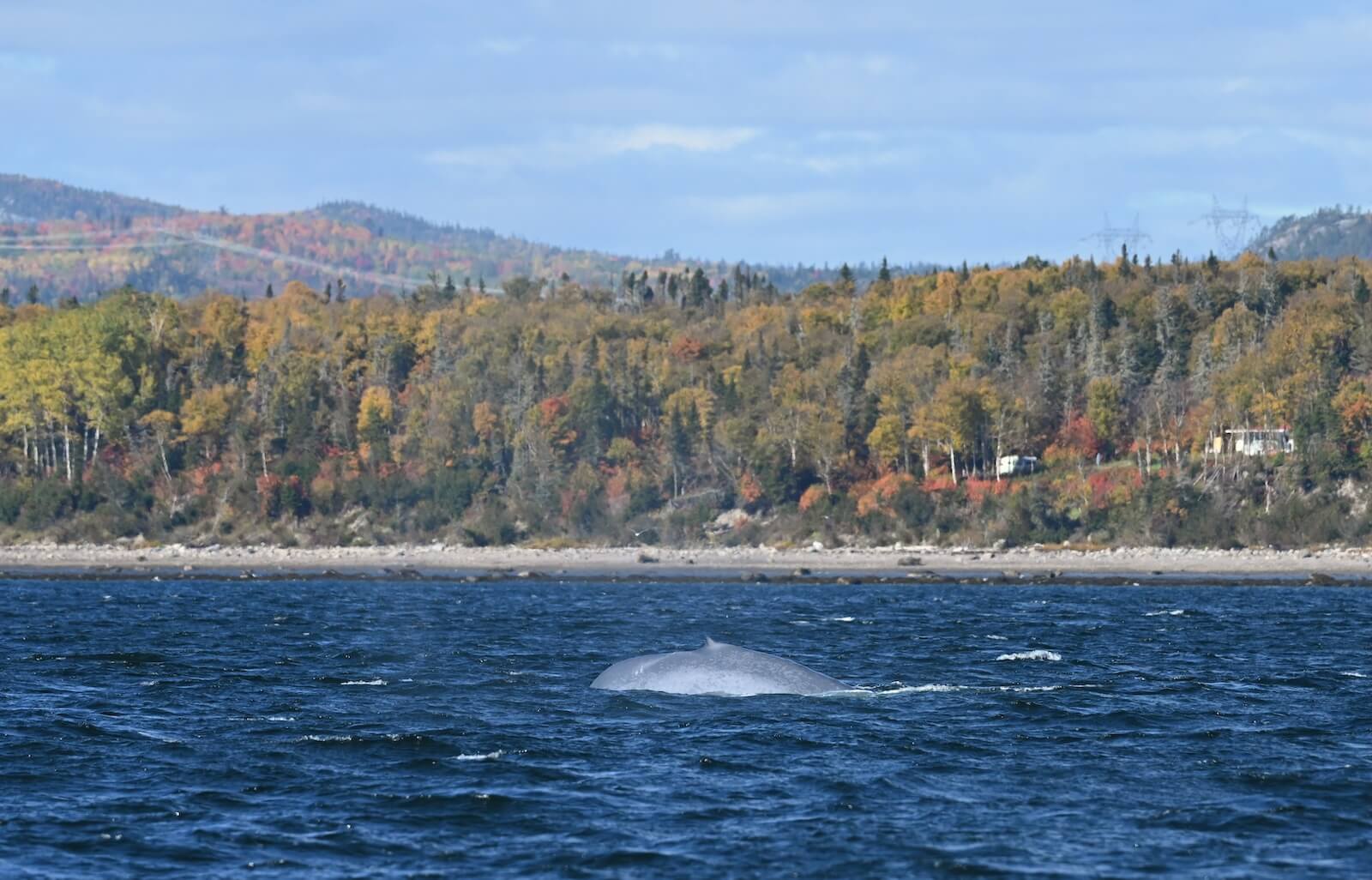Large herds of gray seals off Tadoussac are attracting increasing attention. Even if only their heads stick out above the water, these seals are much larger than they appear. Broad and robust, males can tip the scales at 300-350 kg; females: 150 to 200 kg.
Fin whales are also congregating. On July 19, not far offshore from Longue-Pointe-de-Mingan, the Mingan Island Cetacean Study (MICS) team observed several isolated fin whales that eventually gathered together in a group numbering about ten individuals. Shortly thereafter, the wind picks up, followed by rain and fog, forcing the team to stay on land for several days in a row. This season to date, the MICS team has identified 66 different fin whales in the Mingan region.
In the Estuary between Les Escoumins and Tadoussac, four or five fin whales alternate between actively travelling or feeding and resting. Minke whales are numerous and are feeding near the water surface; observers watch them as they hunt.
From the lookout of the land-based Pointe-Noire Interpretation and Observation Centre (Parks Canada) in Baie-Sainte-Catherine, the naturalist on duty, along with visitors, is also observing the agile movements of belugas under the water surface. At certain moments, predation is suspected. Belugas feed on groundfish (capelin, herring, smelt, sand lance), eels and invertebrates, but they can also hunt in the water column near the surface by swimming or treading against the current.
A naturalist at the Baie-Sainte-Marguerite site (Parcs Québec) mentions that the belugas that ply the waters of the Saguenay Fjord seem to use the high tide to reach the bay; recently observations have peaked in the last two hours of the incoming tide. It seems that belugas take advantage of the currents to save energy while swimming. Although belugas have the physique to move easily through the water (hydrodynamic body, powerful tail, smooth skin and stabilizing pectoral fins), at 7 km/h, they are amongst the slowest of the toothed whales.
The naturalist indicates that she also heard a group of about twenty individuals, mostly adults, producing various sounds at the water surface on July 11. Vocalizations, active behaviours at the water surface, “logging”… these types of behaviour are often noted in this bay, which seems to be of particular importance for the belugas of the St. Lawrence. Located about twenty kilometres from the mouth of the Fjord, it is part of the Saguenay-Saint-Lawrence Marine Park (SSLMP) and is bordered by the Saguenay National Park.





